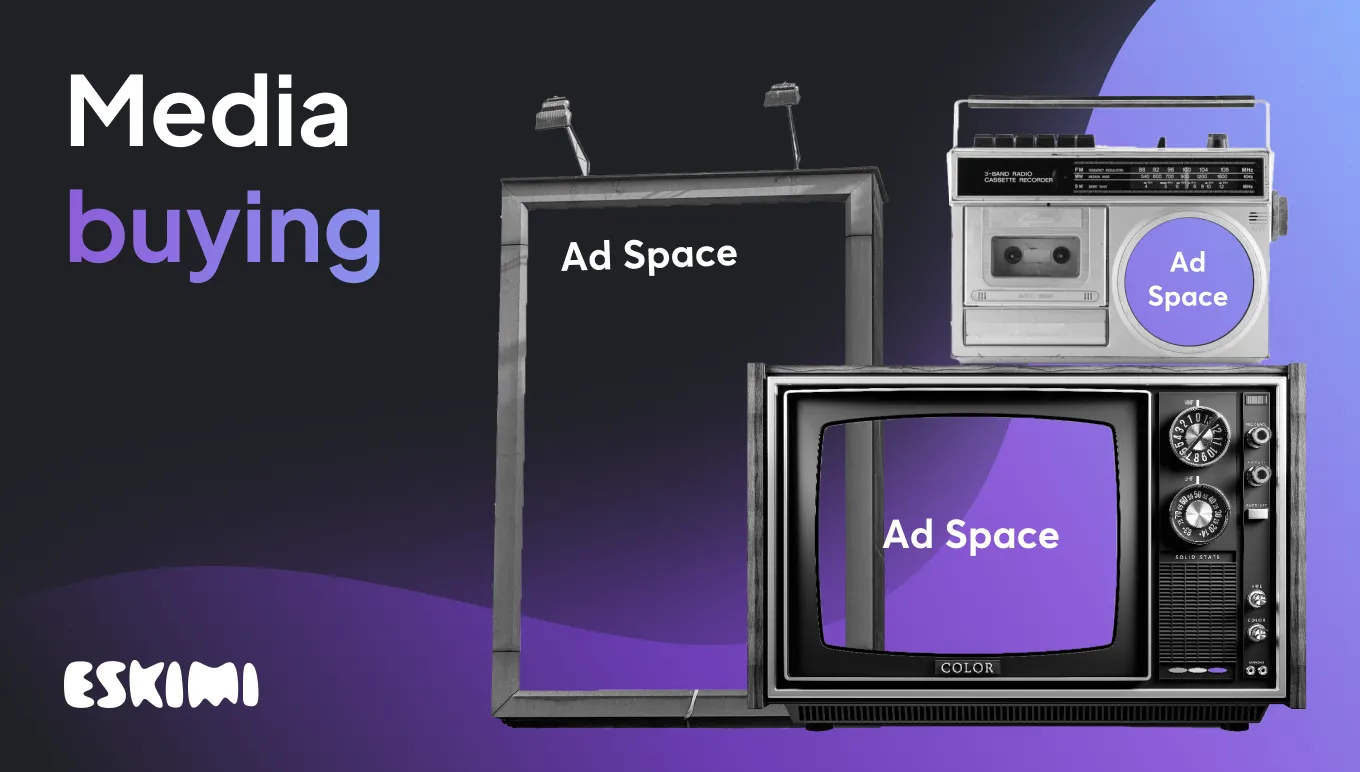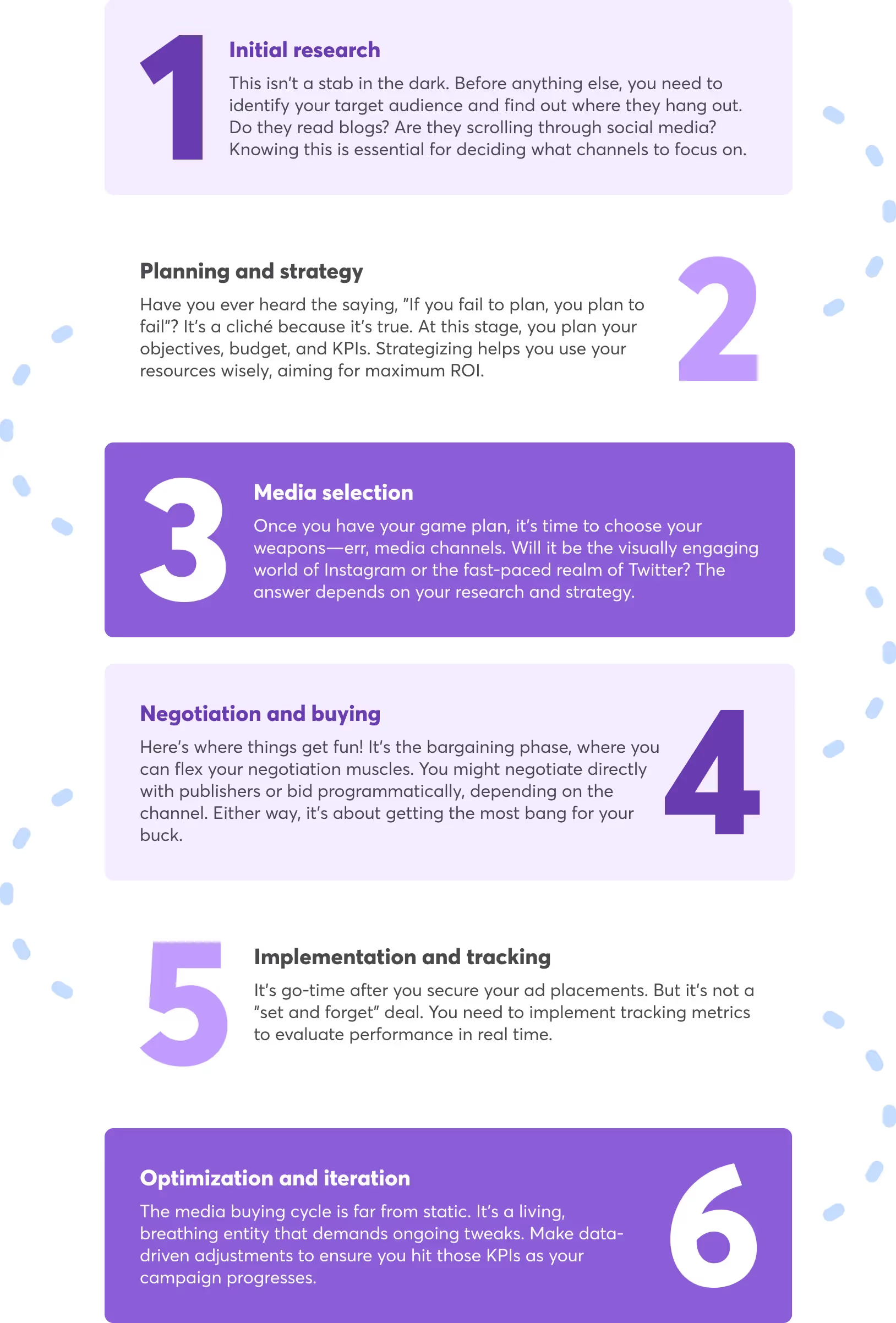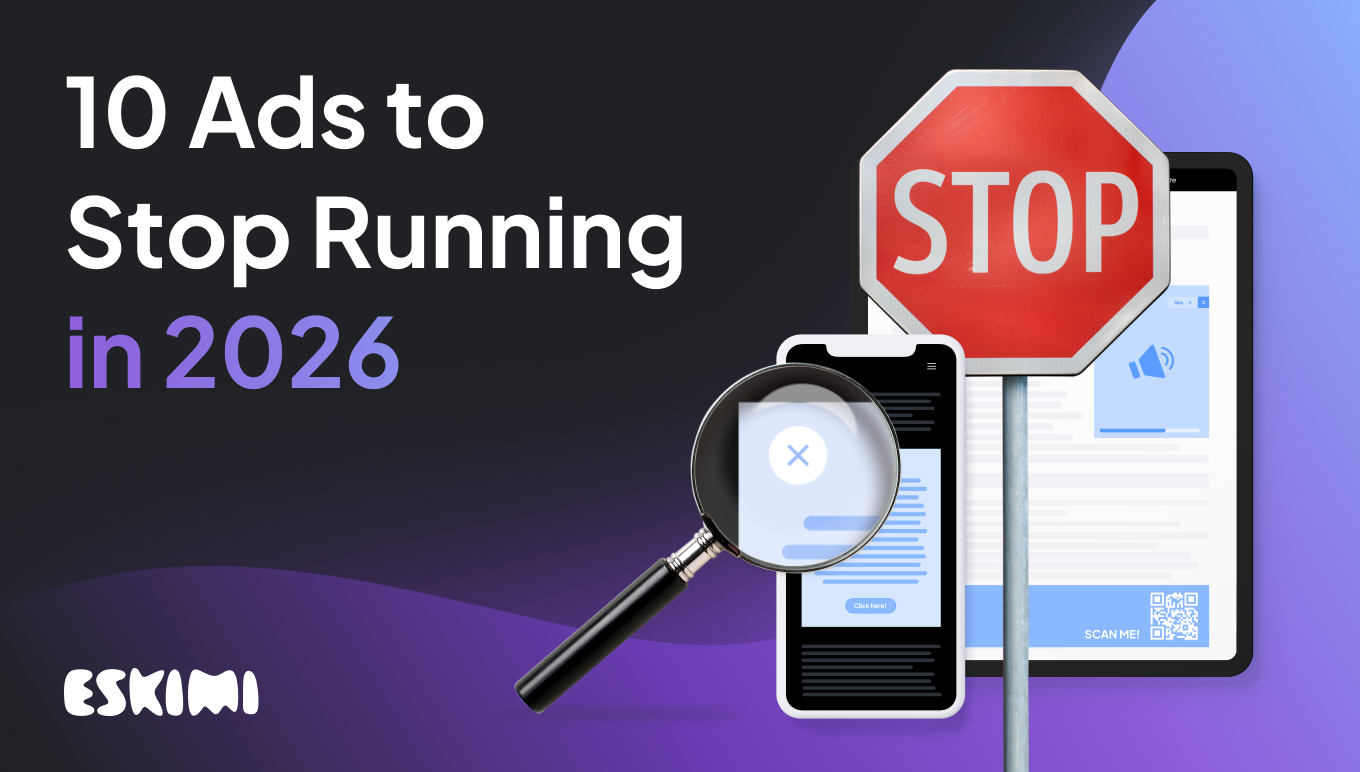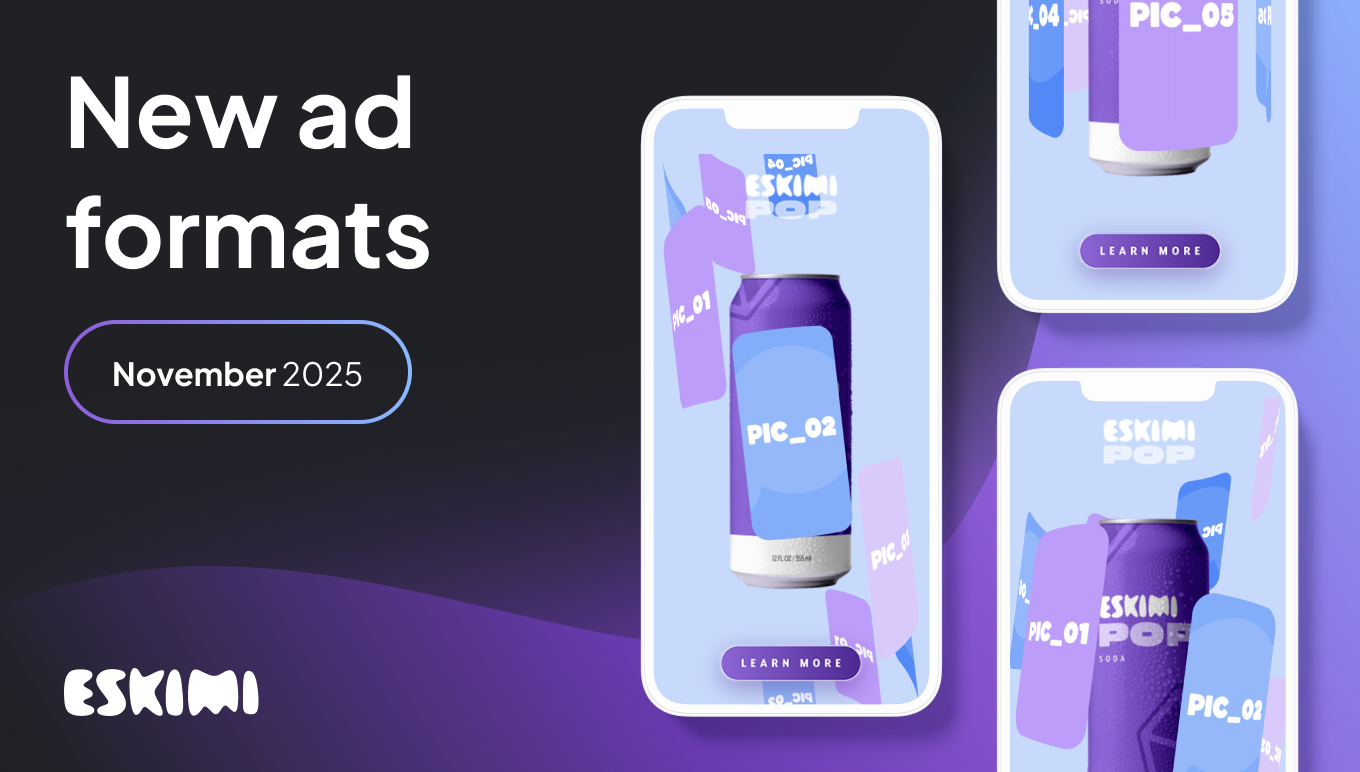Media Buying: Optimizing Your Ad Spend in 2024

According to a report from market research firm Fact.mr, as of 2022, the worldwide market for media purchasing services is valued at $69 billion. It is projected to grow at a compound annual growth rate (CAGR) of 6.2%, aiming to reach an estimated $125.9 billion by 2032.
Numbers are sending a clear message—attention is the hottest currency, and there's an art to capturing it. Media buying is a subtle mix of strategy, data, creativity, and gut instinct cultivated over decades. Media buying has evolved from print ads in newspapers to today’s sophisticated programmatic ad platforms, and brands must keep pace.
Here's what makes media buying the pulse of advertising:
- Dynamic landscape: Media buying isn’t just about purchasing ad space. It’s about understanding where your audience hangs out when they are most receptive, and what messages resonate with them.
- The marriage of data & creativity: In this age, data drives decisions. But raw data isn't enough—combining numbers with a creative flair crafts compelling campaigns.
- Negotiation & strategy: Behind every ad you see, there's a negotiation story. Getting the best ad spaces at optimal times and prices requires a blend of relationship-building and strategic foresight.
- Programmatic power: Automation has taken the world by storm. Programmatic buying allows advertisers to use software to purchase digital advertising, making the process more efficient and personalized than ever before.
- First-page phenomenon: In today’s digital era, it’s not just about being seen; it’s about being seen first. With most online traffic never venturing past the first page of search results, media buying strategies have to ensure brands are right where their audience is looking.
Definition of media buying
Think of media buying as the backstage pass to your audience’s attention. It's the strategic, data-driven purchase of advertising space across various media channels, both digital and traditional. This isn't just a 'click and hope' strategy—it's a meticulously crafted process to reach your target audience as effectively and efficiently as possible.
- The art: This involves understanding human behavior, creating compelling narratives, and crafting messages that resonate.
- The science refers to the data analytics, metrics, and algorithms that allow us to make informed decisions. Here, the focus is ensuring that every dollar spent brings the highest possible return on investment (ROI).
Things to keep in mind:
- Media buying is NOT a 'one-size-fits-all' game. It's a tailored suit designed to fit your brand's specific needs.
- It bridges the gap between a brand and its potential customers, serving as the funnel that directs the right eyes to the right message at the right time.
- This process leverages creativity and analytics, turning a simple ad into an engaging experience with the ultimate goal of driving action—brand awareness, website visits, or direct sales.
From securing a prime-time connected TV slot to snatching that coveted front-page banner on a popular website, media buying orchestrates where and when your advertisements will appear. This is the battleground where brands compete for the most valuable asset in the world today: consumer attention.
How media buying has changed over the years
The term has been around for decades, but it’s only improved with age, like a fine wine. The evolution of media buying is a fascinating journey that navigates the complex seas of technological innovation, data analytics, and ever-shifting consumer behaviour.
Let's dig into this transformation.

In the grand tapestry of marketing, media buying has evolved from a static painting into a dynamic, ever-changing mosaic. The game has shifted from mere placement to a sophisticated strategy that employs analytics, real-time adjustments, and multi-platform reach to capture audiences.

Types of media buying
Gone are the days when it was all about negotiating rates for a spot on television or radio. The digital age has ushered in many options, each with unique strengths and weaknesses. Let's examine some types of media buying.
Direct buying: Direct deals with publishers
- Old but gold: This is the traditional approach, but don't underestimate its efficacy. Direct buying is like the classic tailor who knows your exact measurements and preferences. You get a custom fit.
- You call the shots: When you buy directly from publishers, you're in the driver's seat. You can negotiate terms, position your ads in premium spots, and get the first dibs on inventory.
- Relationships matter: Building a solid partnership with publishers can yield benefits like more favourable rates or early access to new formats and placements.
Pro tip: This method requires more legwork and potentially higher costs, but it gives you greater control and often a more premium placement.
Programmatic buying: Real-time auctions and exchanges

- The new kid on the block: Think of programmatic buying like the stock market of advertising—everything happens in real time, and the highest bidder wins.
- Automation for the nation: Say goodbye to manual negotiations. Utilizing sophisticated algorithms, you can target audiences more precisely than ever.
- Economies of scale: The potential reach is enormous because you’re buying from multiple publishers simultaneously.
Remember: Programmatic advertising automates the decision-making process of media buying by targeting audiences and demographics in real time, optimizing efficiency and reach.
Social media buying

- Scroll and tell: Social media platforms are like modern-day billboards, except they're interactive and often addictive.
- Micro-targeting: Want to target 24-year-old vegan yoga instructors living in Brooklyn? You can do that.
- Pay-to-play: Organic reach is declining, which makes paid social media buying essential for visibility.
Quick fact: Social ads can also work in synergy with your organic social media efforts, creating a feedback loop of engagement.
Native advertising

- Blends in: Native advertising fits so naturally within the content you're consuming that you barely notice it's an ad.
- Trust factor: Because native ads don't look like traditional ads, they're less likely to be ignored and often result in higher engagement rates.
- Quality over quantity: The focus here is on delivering value through content, whether an article, video, or interactive experience.
Wisdom nugget: Native advertising requires a deep understanding of your target audience and your advertising platform. Quality content is king here.
Understanding the media buying cycle
In a nutshell, the concept is 'buying ad space.' Is that it, though? Not really. The media buying cycle is a meticulously choreographed dance harmonizing research, negotiation, and analytics. It has a lot of layers.

Challenges and pitfalls in media buying
While the rewards are immense—increased brand awareness, targeted audience reach, and improved ROI—the road to success is fraught with challenges and pitfalls.
Data overload
Every one of us is bombarded with content and information. Ad fatigue is a real thing. CTR, impressions, conversions, viewability—the list of metrics is endless. The real challenge is not in gathering data but in understanding it.
Challenge: Failure to properly analyze or implement insights can result in wasted budgets and missed opportunities.
Audience fragmentation
The advent of multiple platforms and channels has fragmented audiences like never before. Your audience is no longer just watching TV or reading the newspaper; they're browsing social media, listening to podcasts, and streaming videos.
Challenge: Targeting your audience becomes akin to hitting a moving target; your efforts will be in vain if you’re not agile.
Rising costs
The increased competition for premium ad inventory has driven up costs. A substantial budget is insufficient; you need a strategic approach to make each dollar count.
Challenge: Without a meticulously planned budget and ROI tracking, you can quickly burn through your funds with nothing to show.
Ad fraud and non-viewability
Fraudsters have become increasingly sophisticated, deploying bots that mimic human behavior to generate false clicks and impressions.
Challenge: If you're not vigilant, your well-crafted ads could be wasted on non-human traffic, deflating your ROI and compromising your campaign's effectiveness.
Creative misalignment
Crafting the perfect message is crucial, but it's equally important that this message resonates with the platform where it's deployed.
Challenge: An ad that works wonders on Instagram may flop on LinkedIn. Creative misalignment can alienate your audience and undermine your campaign goals.

Media buying tips and strategies
Rookie or seasoned pro, ideas can be a breath of fresh air or a kind reminder to get the most out of your media buying efforts. Let's cut to the chase:
Know your audience like the back of your hand
Data, data, data: Dig into your analytics to understand who your target audience is. Demographics, psychographics, and online behavior—leave no stone unturned.
Persona mapping: Create detailed customer personas. These aren't just hypothetical sketches; they're your golden tickets to relevant and resonating ad content.
Nail the media mix
Diversification: Don't put all your eggs in one basket. Diversify across various channels, from digital to print and everything in between.
Test the waters: Allocate a small budget for experimenting with newer or riskier channels. You never know what could be the next big thing for your target audience.
Timing is everything
Seasonality: Is your product seasonal? Don't waste money advertising snow blowers in the summer.
Day-parting: There are specific times of the day when your audience is most active. Identify these sweet spots and focus your ad delivery during these windows.
Optimization and Real-Time Bidding (RTB)
Bid wisely: Use real-time data to adjust your bids for better ROI. If an ad space isn't performing, lower the bid or remove it from your campaign.
A/B testing: Regularly conduct A/B tests to understand what's working and needs a revamp. Trust me, the most minor changes can sometimes produce the most significant impacts.
Monitor and measure
Key Performance Indicators (KPIs): Establish clear KPIs from the get-go. Know what you aim for, whether cost-per-click (CPC), click-through rate (CTR), or conversions.
Regular check-ins: Monitor the performance regularly, not just at the end of the campaign. Quick interventions can save a failing drive and maximize the ROI of a successful one.
Level Up Your Advertising with Eskimi
- Reach 96% of Open Web
- 2,500+ Targeting Options
- 100% Managed or Self-Service
- In-House Creative Studio Team
- Display, Video, In-Game & CTV
- #1 Rated DSP on G2




.png)